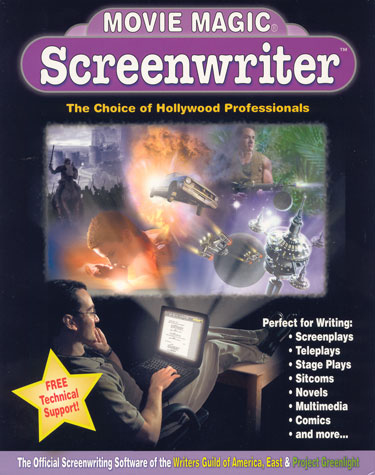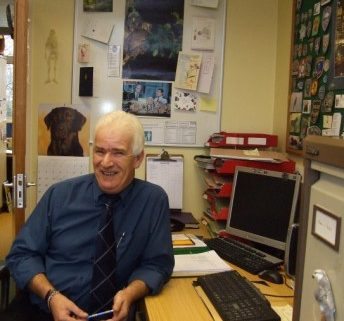Famous Last Words. That’s the title assigned to this week’s show, Episode 7, written by Jose Molina. First of all, I want to thank Mr. Molina for sparing us the torture that comes with episodes featuring the Lanie Parrish character. I’d gathered all the necessary provisions that I thought I might need to help me make it through a night of Parrish and her forensic pukery – garlic cloves, wooden stakes, silver bullets, and barf bags, but to my relief she’d been written out of this one. Hooray! Instead, we were treated to a very brief visit with M.E. Perlmutter (pictured above with the camera).
I’ve said it in the past, but I’ll mention once again that the Perlmutter character is pretty good. He seems more like a real M.E. than do most TV M.E.’s and coroners. His comment about the cause of death in tonight’s episode was short, sweet, and sort of believable. He said, “The cause of death is a broken neck. At least that’s my prelim.” Based on things he could actually see at the crime scene (Remember, a crime scene is anywhere evidence of a crime can be found. The scene of the crime is where the actual crime took place) Perlmutter says he believed the murder took place somewhere else and the body was brought to the current location, and staged. That’s good stuff. He made an educated guess based on his experience.
Parrish, on the other hand, would have spouted off some sort of Martian gobblety-gook, like the crooked alignment of sweat glands in the neck indicated the cause of death as a blunt trauma to the large intestine. Of course, she would go on to say, that could only mean one thing…the killer was a 32-year-old dwarf, left-handed, albino chimpanzee from the Congo.
Anyway, on with the show…
– Beckett removed and handled the victim’s IPod which could have destroyed or altered evidence such as fingerprints.
– One of Beckett’s sidekicks reported that all shoe prints – a dozen of them – in the area where the body was found had been checked and sized. They ranged from size 5 through size 11. Amazingly, he had done this in the time it took Beckett and Castle to return to the police department from the murder scene. What’s more amazing was that he actually did this. How? Where’d he find the prints? On concrete? Why did he do this? What did he hope to learn? That people wear shoes? This is New York City, right? I wonder how many people have walked on that particular piece of pavement?
The junior detective did say that he’d checked and learned that there were no security cameras in the area. Now this was good information. Cameras are everywhere these days.
– It was nice to see Castle listening to his daughter’s ideas. Good investigators listen to everyone. Tunnel vision is not a detective’s friend.
– Okay, one of the worst things I’ve ever seen on this show happened next. This one even tops some of the Parrish buffoonery. In fact, it was so bad that I received an email from Lt. Dave Swords the second it happened. He couldn’t believe what he was watching either. What, you ask, could have been so horrible that it prompted two old-school cops to begin exchanging emails like teens texting during a trip to the mall? It was the wacky, crazy, bizarre stop and search by Beckett and crew of a public bus.
This scene was beyond ridiculous. First of all, the bus was overflowing with innocent people. Cops would never stop a public transport vehicle in the manner that Beckett, Larry, and Curly did on this show. The idea is to protect and save lives, not endanger them. So, passing the bus, sliding to a sideways stop in front of it, and jumping out with guns drawn wasn’t exactly very safe to begin with. But to board the bus with weapons drawn and then order everyone to “Show me your hands, now!” was just plain stupid with a capital S. Why didn’t Beckett take it one step further and paint a bright red bulls eye on her forehead before storming the bus?
Lets just suppose for a moment that the suspect was indeed on the bus, and he was. He was a murder suspect, right? And what do murder suspects sometimes have in their little pockets? That’s right, guns and knives. To board the bus as Beckett did endangered the lives of everyone on the bus, including the police. Also, this could have easily turned into a hostage situation or mass murder courtesy of NYPD.
– Beckett locates the suspect and pulls him to his feet. A slight struggle ensues and Beckett ends it by striking the guy between his shoulder blades with her pistol. She delivered that “crushing” (I’m kidding) blow from a distance of about six inches. I seriously doubt she could have wounded a crippled baby gnat with the amount of force that could have been generated in that move. Yet it sent the grown man, whose adrenaline had to pumping hard, to his knees. Un- $%#ing – believable. You know, Mr. Molina, it’s not legal, yet, to smoke that stuff. It’s coming, I believe, but that day’s not here yet. I know, Lewis Carroll came up with a pretty fair story whie tripping, but…
By the way, cops are NOT trained to use their guns for hitting people.
– The suspect lands on the floor at Beckett’s feet after receiving the powerhouse strike to the back. She immediately tells him he’s under arrest for murder. The only people who should be under arrest at this point are the show’s writers and producers. She had nothing – no probable cause, no evidence, no nothing. The last time I checked it wasn’t illegal to buy a bus ticket.
Factually, this was a horribly written scene.
– Beckett is interviewing a murder suspect inside a department interview room. He pulls out his phone to play a video for Beckett. No way. He’d have been searched prior to entering the room and his belongings would have been held, especially a communication device.
– Beckett says, “Everybody looks like a killer to me. It’s a job requirement.” Good statement. Cops don’t trust anyone at first. An old sheriff’s captain once said to me, “Treat everybody as a suspect and you’ll live to come to work tomorrow. Besides, we just arrest ’em. It’s up to God and the judge to sort the good ones from the bad.”
– Beckett told another person this week that he couldn’t leave town. Nope. Cops don’t have that authority. People can come and go as they please unless a court orders otherwise. I’m beginning to think the writers are using boilerplate scripts since a few lines seem to pop up every week. I wonder if they use Movie Magic Screenwriter software?

– The murder victim’s sister is in the morgue, alone with her sister’s body. She also drinking from a liquor bottle. People aren’t allowed to roam, at will, through any law enforcement-type facility. Morgues have a ton of evidence that must be protected from contamination. The sister was there, supposedly, to ID the body. Most M.E.’s offices nowadays don’t allow up close contact during the ID process. Many offices use photos, or have the person view the body through a glass.
– Beckett says the M.E. analyzed the victim’s lipstick and found that it was a certain brand, type, and even learned the specific color name. M.E.’s don’t do evidence analysis on things like lipstick. That sort of thing is performed by specially trained scientists or techs.There’s a mention later in the show about the M.E. testing gunpowder, too. Nope. Nope. And, nope.
– Castle locates a bullet hole in a wall panel in the office of a murder suspect (yep, another suspect). Beckett looks at the hole and says it’s looks like a .38 caliber round made the hole. No way she could tell this by merely looking at the hole.
Bullet calibers are measured in inches (a .25 caliber bullet is .25 inches, or 1/4 inch in diameter). For example:
.38 Special diameter = .357 inches
.38 Smith and Wesson = .354-.360
.357 Magnum = .357-.359 inches
.35 Remington = .358 inches
.380 Auto – .355 inches
So you see, a simple eyeballing is not enough to determine what size bullet made a particular hole. The material struck by the bullet would affect the hole size as well. Paper tears, while wood splinters. And so on.
Here’s a test. What caliber bullet made this hole?

See what I mean?
– Again, an attorney sits in on Beckett’s hard-nose interrogation of his client without saying a word. No way. An attorney would never allow this to take place at all. They certainly would not permit the cops to rake their clients over the coals.
– I liked the director’s attempt to show the murderer’s body language when Beckett and Castle confront him with proof that he committed the crime. This is the moment all investigators hope to reach, when the suspect’s eyes begin to tell the story. He begins to touch his face, throat, and ears. His eyes start searching the room. No eye contact with the interviewer. Then, the head drops and he sighs. Maybe a tear falls at this point.
Finally, the connection. He looks into your eyes and says, in a quiet, meek voice, “I did it. I killed Episode 7 with that crappy bus scene.”
*ABC photos
Save




